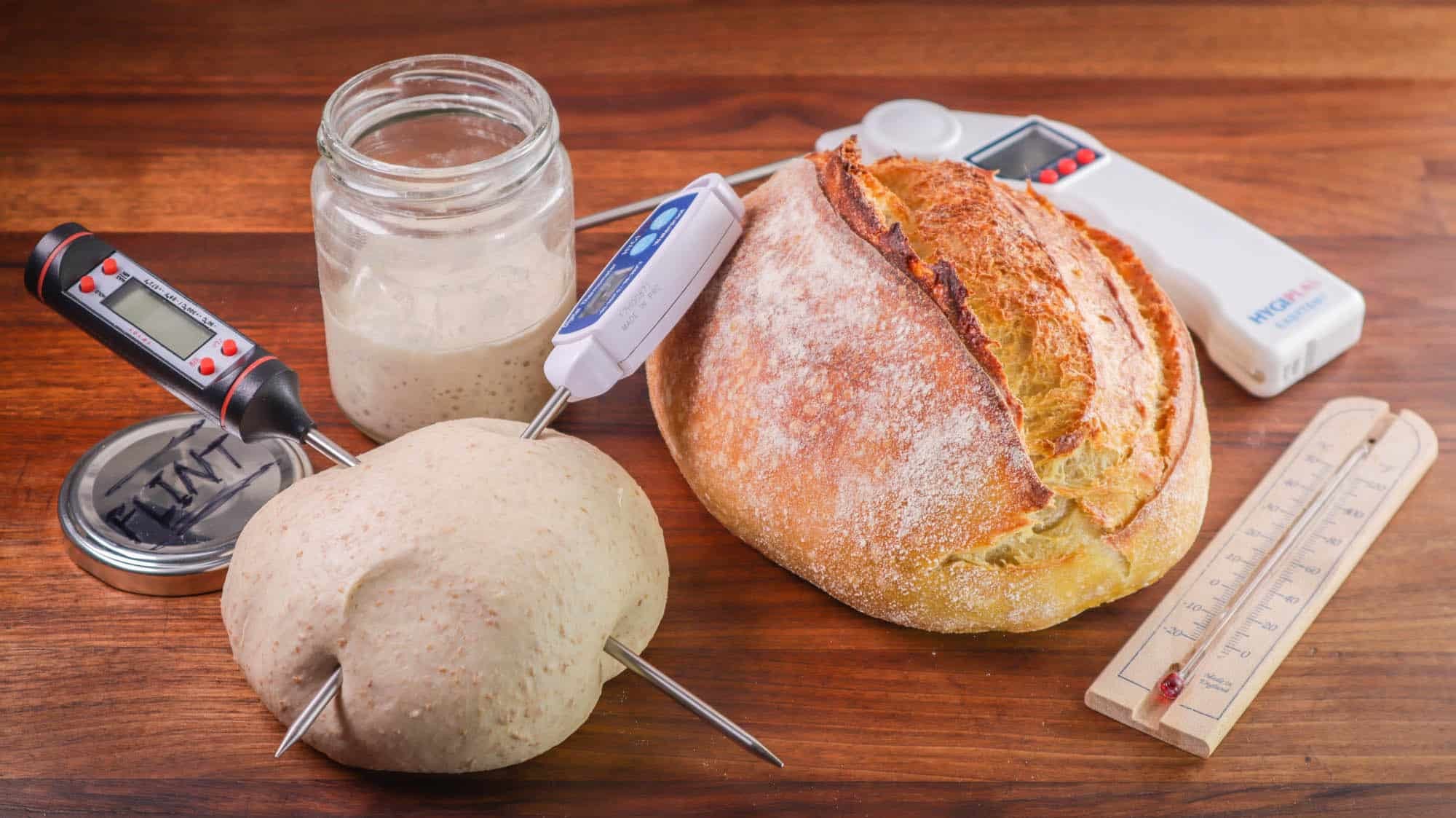Temperature is one of the most important parts of bread making. Controlling the temperature of your dough will let you get consistent results every time.
Controlling the temperature of naturally leavened dough and any dough made with a preferment for that matter is quite like doing it for straight yeasted dough.
The only difference is that instead of 3 variables (flour, water, air), with sourdough we are adding one more – the levain (preferment).
Click here to read the first article in which I explain how to control the temperature with 3 variables.
So, taking that into account and knowing the mixing temperature, which is around 7C in my case. That is 7C for around 5 minutes of kneading. It is important to know how many degrees per minute it is because different dough requires different mixing time. This is up to you to work out because your hands might be colder or warmer.
The formula is as follows: (desired dough temperature – mixing temperature) x 4. Take the resulting number and subtract the air, flour & levain. The remaining figure will be the water temperature.
Example: DDT (desired dough temperature) 25C.
25 – 7 = 18. 18 x 4 = 72. 72 – 22 (air) – 21 (flour) – 21 (levain) = 8C (water temperature).
You can refrigerate your water or place it in the freezer to get it nice and cold.
If you are making a dough using the autolyse method, then the number of variables changes to 3 because the flour and water would be premixed.
In this case the formula would be: (desired dough temperature – mixing temperature) x 3. Take the resulting number and subtract the air, autolysed dough and that will give you the desired levain temperature.
You can achieve this by refrigerating the levain. The autolysed dough can also be refrigerated to get to this number.
This is not an exact science and conditions in every kitchen differ. It is up to you to work out the best way.
Note that mixing by hand warms up the dough more quickly than a mixer. If you want to work out the mixing temperature for your mixer then make a dough, take the temperature before mixing, then mix until ready, take the temperature again and that will be it.
Keep in mind that the surface that you knead your bread on has an impact on the temperature too. A wooden table will be warmer than a marble one. Different surfaces will also act differently throughout the seasons. Some may be warmer in the summer than others and vice versa.
You can also work out the degrees per minute that way you can adjust your formula depending on what kind of dough you are making.
Watch the video below this post to see a detailed explanation with examples.
Watch the video here



